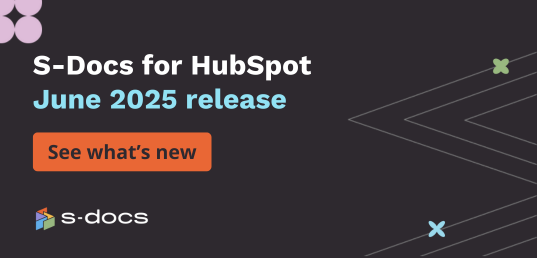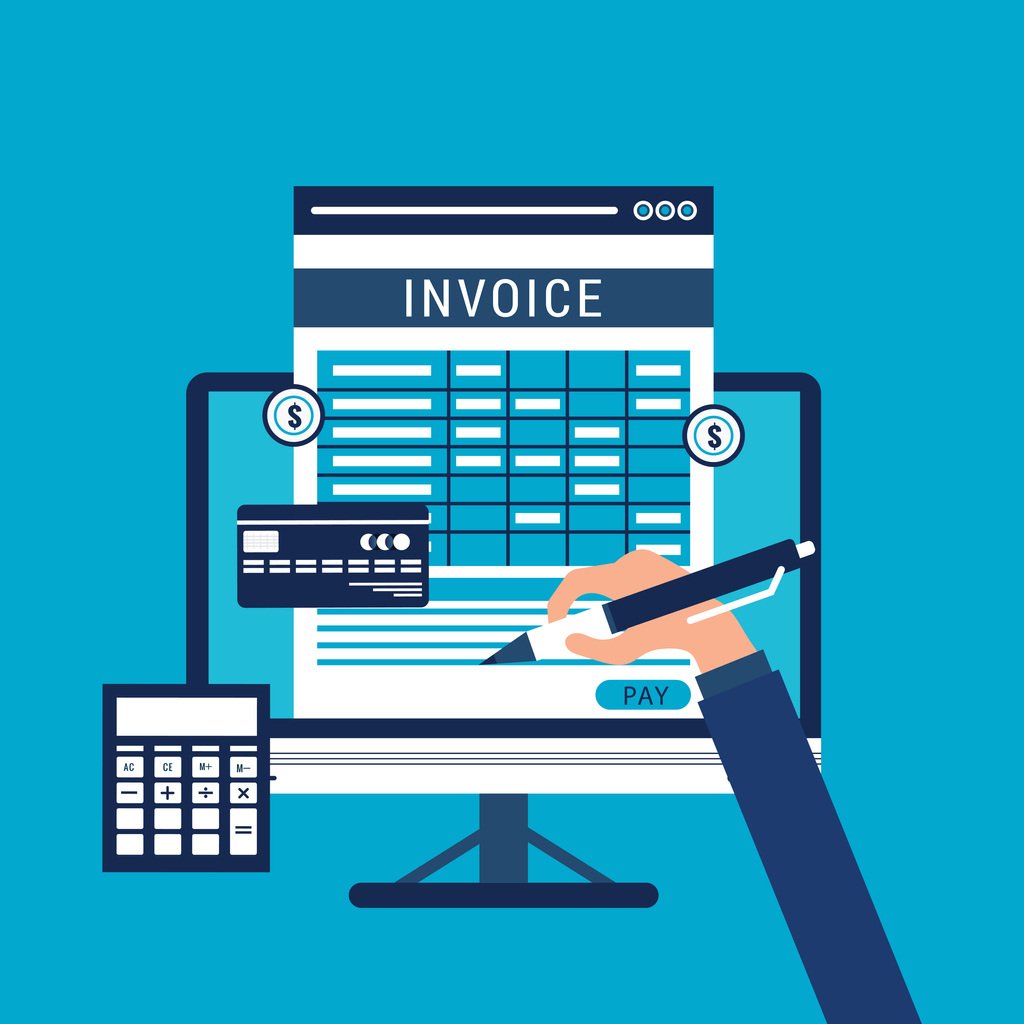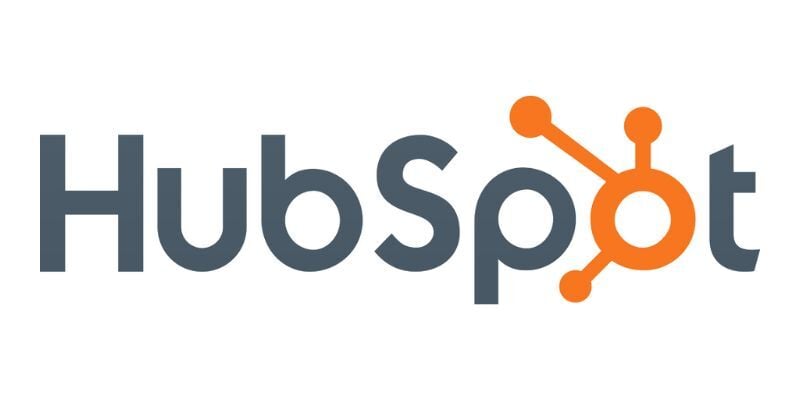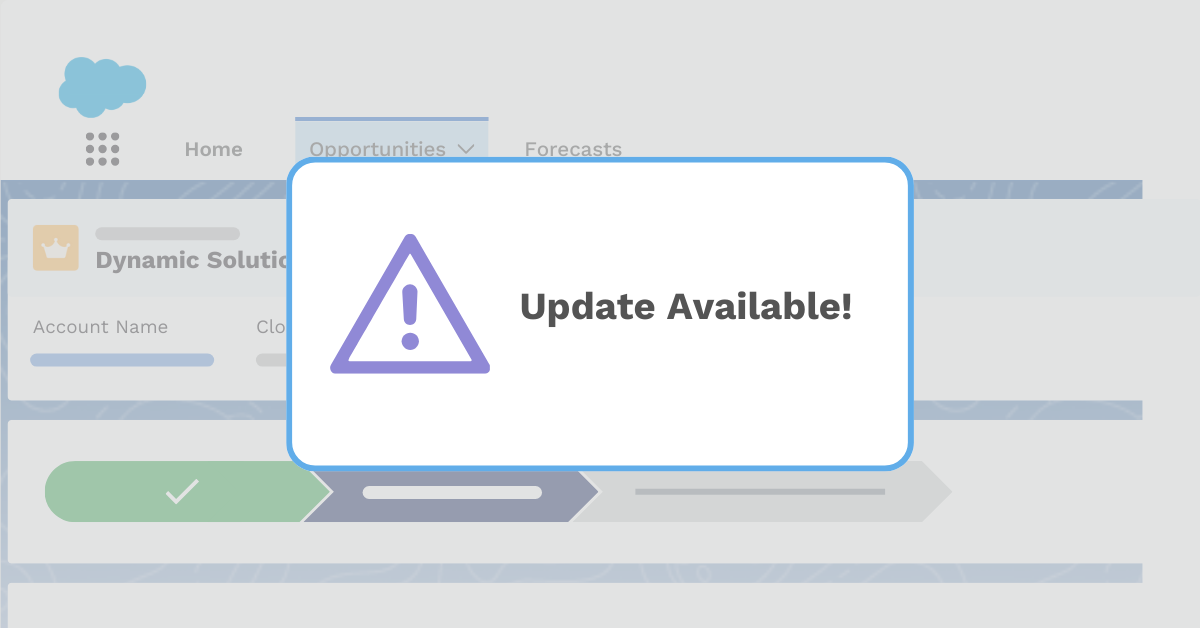What is an invoice?
Sure, it’s a document one business sends to another detailing services rendered and how much they cost. It’s a bill.
But an invoice is also a first impression. Done right, it shows a client who you are. Your logo, your colors, your address. The services or products you proudly offer. It sends a message about what working with you is like.
The way you create and manage your invoices can affect whether you get paid on time or at all - and set the tone for your entire customer relationship. All in all, invoices are pretty important.
At S-Docs, we’re invoice experts - we’ve been helping our customers efficiently generate them for over 10 years. Today, we’re going to share our knowledge.
You Might Also Like: 6 Key Business Documents You Should Be Automating [Part 2]
How To Create Immaculate Invoices In Salesforce
Creating great invoices starts with creating reusable invoice templates. Once you have the skeleton, building out the meat will be a much simpler process.
Pro Tip: It’s easier to create invoice templates with a document generator, since your data can be pulled in from Salesforce at the click of a button - but we’ll still share our secrets even if you opt to go manual!
In general, a good invoice will contain all of the following information.

True, invoices vary from business to business. A flower shop and a legal office might deliver documents with quite distinct looks.

But when it comes down to it, an invoice’s primary purpose is to get you paid as easily as possible - and money is a universal language. Despite their differences, invoices will contain the same basic ingredients. Let’s walk through them in more detail now (click an invoice component to scroll down to it!).
Components Of A Good Invoice
- Your Branding
- Company Information
- Invoice Details
- Itemized Services/Products
- Payment Terms
- Thank You
1. Create An Invoice With Your Branding
Ever heard the phrase “clean space, clean mind?” We’re going to coin a new phrase today: “professional invoice, professional company.”
By “professional,” we don’t mean all seriousness and no fun. We mean that when you put care into invoices that represent your brand, you give the impression that you’ll treat your customer with the same care.
You Might Also Like: How To Create A Stunning Statement Of Work in Salesforce
Always include your logo somewhere prominently on the page - preferably at the top. You can also add design elements like a graphic or image that show off your brand colors.

A few more presentation tips:
- Don’t use too many colors or fonts - stick with one or two.
- Keep your invoice to one page if possible. If your services or products are more complex, you can include a separate description document.
- Remember that this document is a reflection of your company, so use intuition. If you’re a creative agency, show off your design skills. If you sell consumer goods, consider including a photo banner of your products.
2. Include Contact Information For Your Company And Your Customer
Contact information gives your customer an easy way to reach you if they have questions or problems paying your invoice - and ensures it gets to the right person in the first place.

You should also clearly label your invoice as...well, an invoice. Remember, the main goal is to make sure you get paid - this document should be as clear and concise as possible.
3. Be Sure To Add Invoice Meta-Information
Invoice details (like invoice number and issue date) may sound boring, but they’re crucial. For one, developing a unique numbering system will help you quickly find your invoice later. In addition, an issue date ensures that you can hold your customer accountable to your payment terms.

If you’re not sure of the best way to establish a good invoice numbering system, consider these tips:
- Make it sequential - start with 0001 or INV0001, and go up from there.
- Use a customer code. An account named Dynamic Solutions might receive invoices like DYN0001, DYN0002, and so on.
- Incorporate dates, like 09-17-2022-01.
We also recommend calling out the total amount due at the top - clear and concise!
You Might Also Like: How To Design A Professional Quote In Salesforce
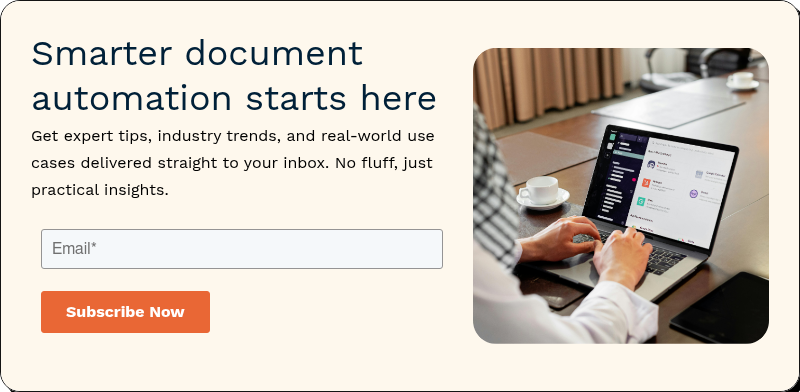
4. Add The Invoice Meat - Your Services/Products And Their Cost
The body of your invoice is the most important piece of the document - that’s why it’s the focal point! This is where you break down exactly what you provided to your customer and how much it cost.
Be as specific as you can when you itemize your products/services without making the invoice too long. Use the same wording that was included on the original quote or proposal, if there was one, to avoid confusion.

Pro Tip: If your products/services can be broken into categories, consider including a master summary of charges per category at the top, and then organize the individual items by category (which we’ve done in the invoice above).
5. Add Payment Terms To Your Invoice
You’ve told your customer what they owe - now it’s time to make sure they know how to pay, and that they do it on time. Include payment terms at the bottom of your invoice to do just that.
You can include specific details like who to write checks out to or your wire transfer information, but it’s always a good idea to add an email too. If your customer has any questions or difficulty paying, it’s best to make it as easy as possible for them to reach out for help.
6. Thank You Goes A Long Way!
Adding a small thank-you message at the bottom of your invoice can show that you appreciate your customer - and it can even help you get paid faster, according to this study by FreshBooks.

Immaculate Invoicing In Salesforce
While invoices will vary by company and industry, they all contain the same basic components. We hope this guide has inspired you to craft invoices for your own business that make your company shine.
However, “invoicing” isn’t just about design. You might have a pristine template stored in Microsoft Word, but if you have to clone it and copy-paste data from Salesforce for every customer, you’ll eventually run into problems that even the best-designed documents can’t fix.
You Might Also Like: How Native Salesforce Apps Reduce Total Cost of Ownership
hat’s where Salesforce document generation tools like S-Docs can save the day. S-Docs allows you to build and store your invoice templates directly within Salesforce (or upload existing PDFs!).

With your template created, all you have to do is click a button on a record, choose your template, and let S-Docs create the invoice for you. S-Docs enables:
- Lightning-Fast invoice creation. In just a few seconds, your invoice will be ready to go. And if you want to skip the clicks, setting up automatic invoices that are generated and emailed in the background is simple.
- Reduced Errors. When your data is merged directly from Salesforce, you can be sure your invoices contain the most up-to-date and correct information, every time. Say goodbye to late payments because of mistakes on your end.
- Faster Payments. Reduce your day sales outstanding by setting up automatic reminder emails.
- Better customer experiences. Your customers will thank you for on-time, on-brand, clear, concise, correct documents. And if you need to collect a signature, our e-signature solution S-Sign enables your customers to access and sign your invoices from anywhere.
- Easy access and storage. S-Docs automatically stores your invoices on the record that they’re generated from - or uploads them to your external document repository of choice.
The best part? S-Docs is 100% native to Salesforce. That means it’s built on the platform, never sends data externally, and automatically integrates with your existing workflows or apps.
Transform Your Invoicing Process With S-Docs Today
Ready to see what S-Docs can do for you? Request a customized demo today, or contact sales@sdocs.com.

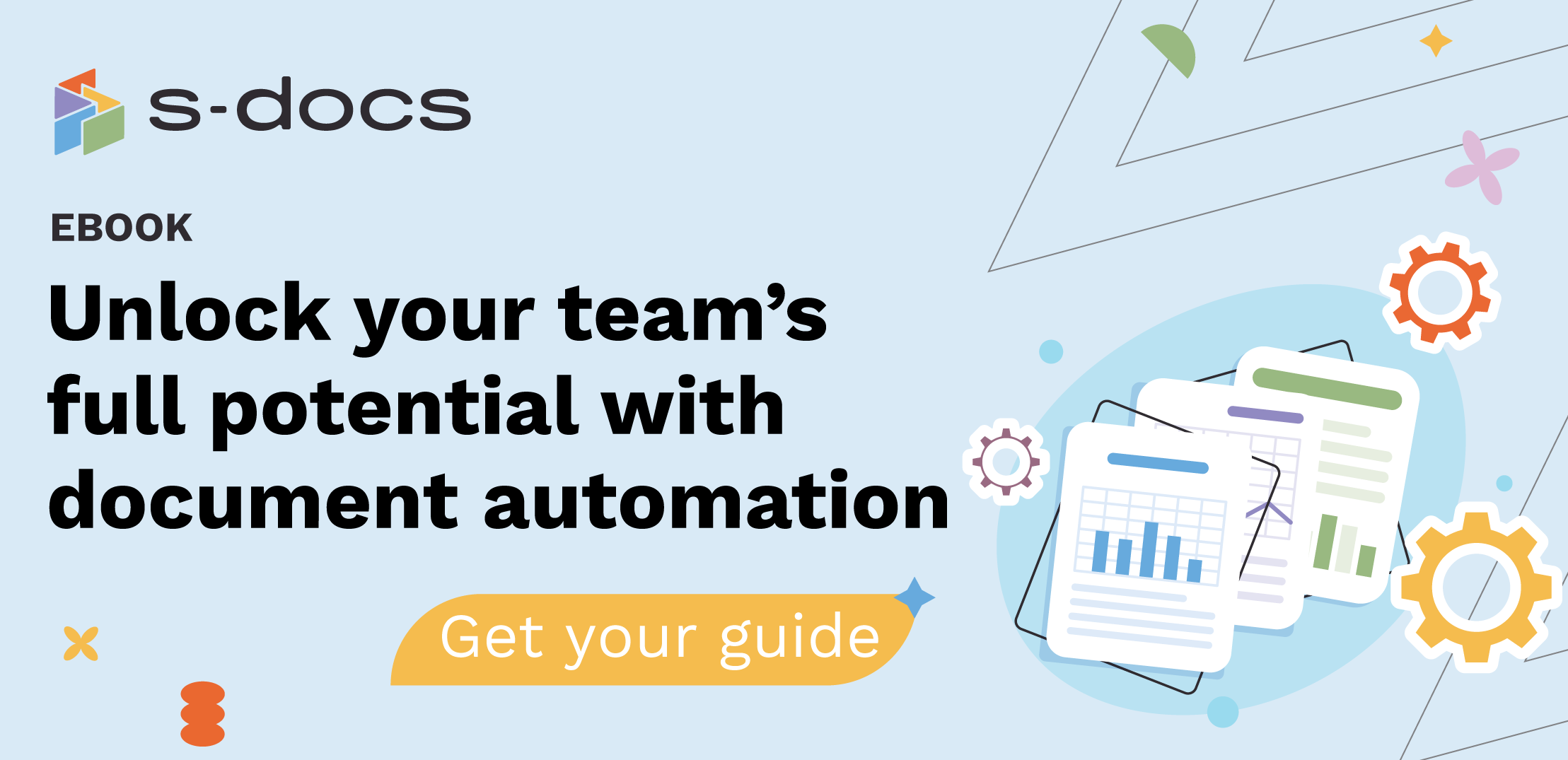
.png)
